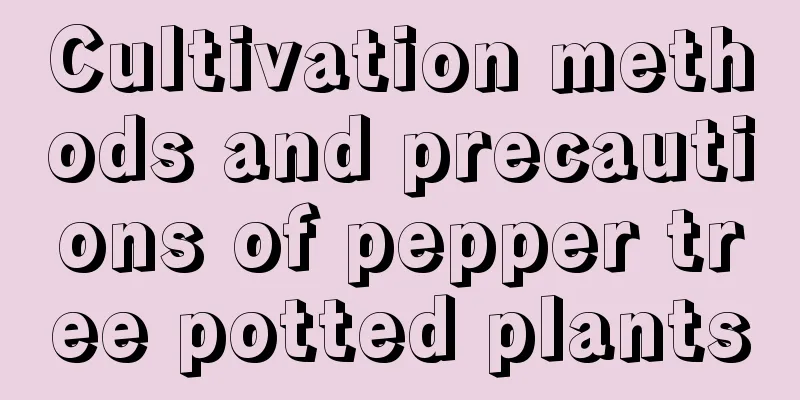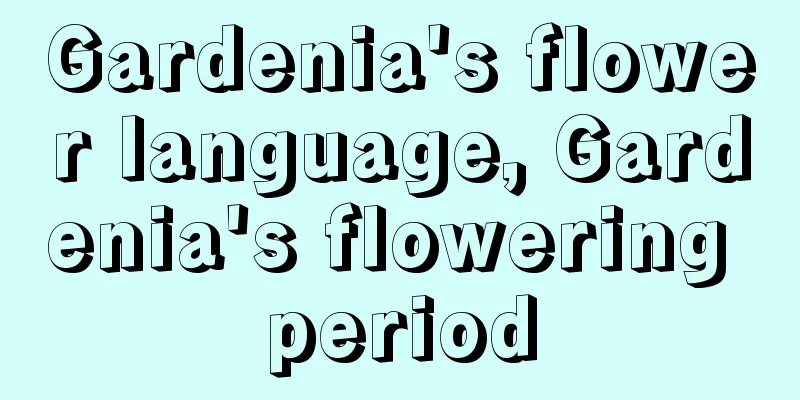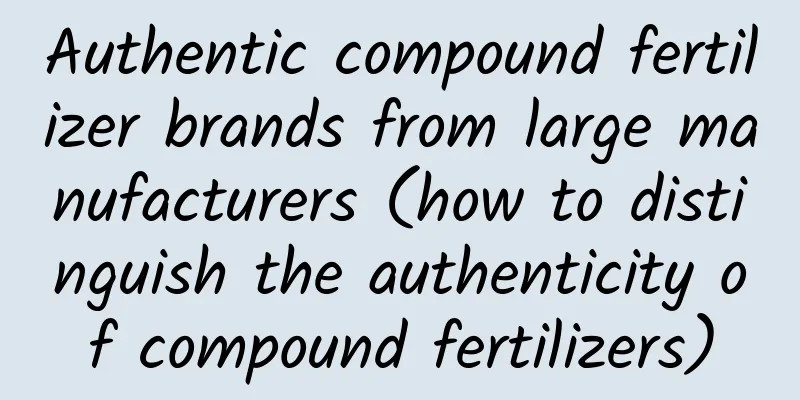Cultivation methods and precautions of pepper tree potted plants

|
Pepper tree is a very popular potted plant. It has an upright plant shape, lush branches and leaves, and small yellow flowers, which makes it highly ornamental. Here are some tips on growing pepper tree in pots and what to look out for. 1. Flowerpot selection Pepper tree bonsai is not resistant to waterlogging, so there are strict requirements on the selection of pots. Try to use pots with good air permeability and drainage. Generally, glazed pottery pots and purple clay pots are preferred. 2. Soil selection The pepper tree bonsai prefers loose, fertile, breathable, well-drained, slightly acidic sandy soil. When preparing the soil, it is generally prepared with garden soil containing humus, organic fertilizer , and coarse sand in a ratio of 2:2:1. Because it is not resistant to waterlogging, a 2-3 cm layer of coarse sand can be placed at the bottom of the pot before planting to allow water to flow through. 3. Trimming and shaping The pepper tree bonsai grows slowly, and in principle, the pruning force should not be too strong, so if we want to maintain a good shape, we must use coiling as the main method and pruning as the auxiliary method. The best time to prune is in spring. Although pruning is possible in winter during the dormant period, considering the later growth recovery and wound healing, pruning is best done in the afternoon on a sunny day in spring. Prune the dense branches, old, weak and diseased branches to improve ventilation and light transmission and reduce the occurrence of diseases and pests. 4. Suitable temperature for growth The suitable temperature for the growth of pepper tree bonsai is 20-30℃. The temperature is high and sultry in summer, so we must shade and moisturize it in time, move it to a cool and ventilated place, and spray water on the leaves in time. The temperature is low in winter. When the temperature is below 10℃, growth stops; when it is below 4℃, it is easy to get frostbite, so we still have to take good insulation measures. 5. Water appropriately The pepper tree bonsai is not tolerant to waterlogging, so the soil in the pot must not be waterlogged. During the growing season, the soil in the pot should be kept moist. In the hot and dry season and winter, water should be sprayed on the bonsai leaves and the environment to maintain relative humidity. Generally water once every 3-5 days, and water thoroughly. 6. Fertilization management The pepper tree bonsai requires a large amount of fertilizer. During the growth period, apply a thin liquid fertilizer every 15 days. After the Mid-Autumn Festival, you can apply 1-2 times of concentrated potassium dihydrogen phosphate solution to increase the plant's winter resistance and disease resistance. 7. Notes When tying the branches with palm fiber, if the branches are too smooth, you can wrap them with a layer of cotton cloth before tying them. When using palm fiber to wrap, be sure not to expose it, otherwise it will easily affect the appearance. In addition, when tying the branches, try to make the main branches appear twisted, and try to make the other twigs as natural as possible. That’s it |
<<: When is the best time to plant tomatoes?
>>: When is the best time to plant cabbage?
Recommend
Cultivation and reproduction methods of mirror grass
1. Breeding methods 1. Soil: This aspect requires...
How to prune the Guanyin lotus
How to prune the Avalokitesvara It is generally b...
Phalaenopsis cultivation method, what are the precautions for cultivation
1. Breeding methods 1. Light: Phalaenopsis prefer...
How to grow agave
1. Lighting Agave requires relatively strong sunl...
How to grow a potted welcoming pine? How to grow a potted welcoming pine?
Cultivation method of Welcoming Pine potted plant...
How to prune Desert Rose?
Desert rose , as an ornamental flowering plant th...
Is Kalanchoe poisonous? How to grow it indoors?
1. Is it poisonous to keep it indoors? This type ...
Cultivation method of Daphne odora
1. Soil It is best to grow Daphne odora in loose,...
Which one is better to keep at home, Guanghan Palace or Wanxia?
Guanghan Palace belongs to the genus Echeveria of...
Four-season maintenance methods of Staghorn Begonia
Spring maintenance methods for Staghorn Begonia R...
Dig some of it from the stinky ditch and plant it in a pot. It actually beats the potted plants you buy at a high price at the flower market!
Water hyacinth Every time this season comes, expe...
What are the charms of the 10 most popular flowers among flower lovers?
Pothos Reasons for being on the list: Purify the ...
The best fungicide for garlic root rot prevention and treatment What is the best medicine for bacterial root rot
What medicine to use for garlic root rot Oxymexyl...
How often should you water your money tree in winter (how to water it at home in autumn and winter, precautions)
Money tree, also known as taro, is a perennial ev...
The efficacy and effects of mango, what will happen if you eat too much mango
1. The efficacy and function of mango 1. Anti-eme...


![[Agricultural Technology Academy] March expert question and answer competition is now open! Come and join us!](/upload/images/67cc004c64c90.webp)






